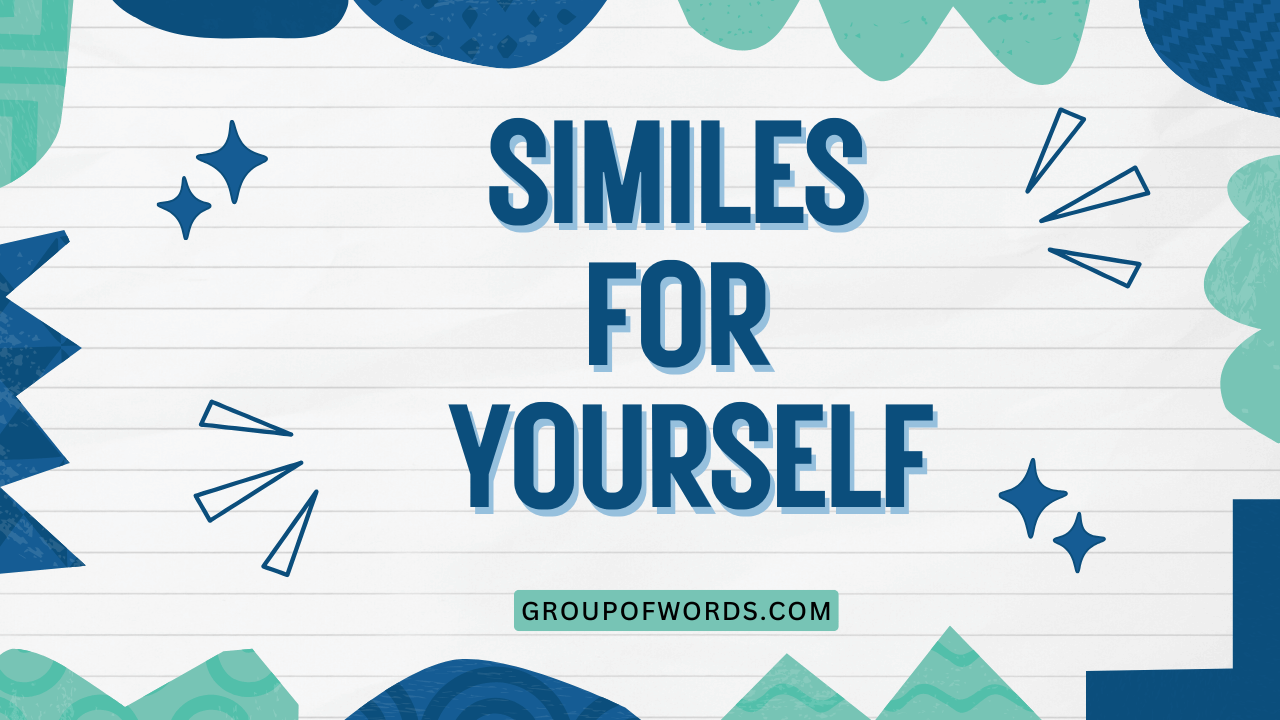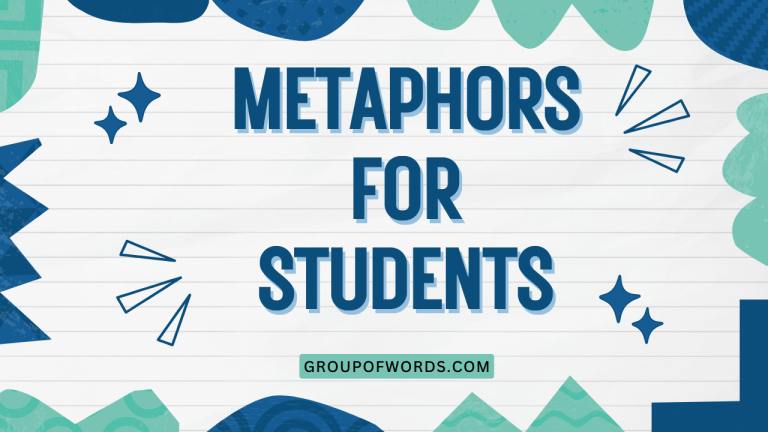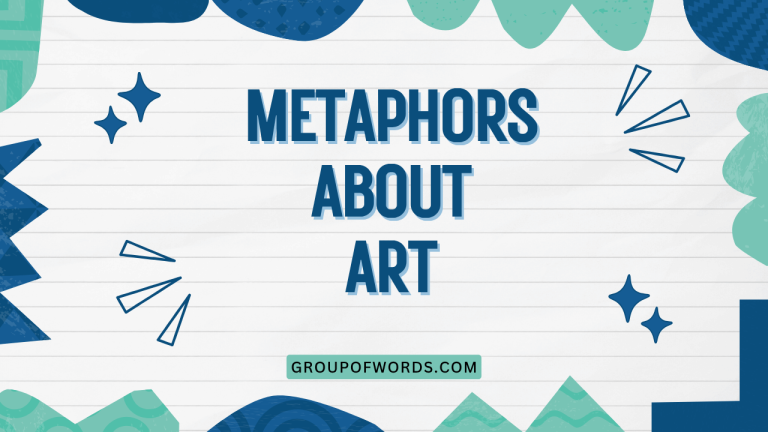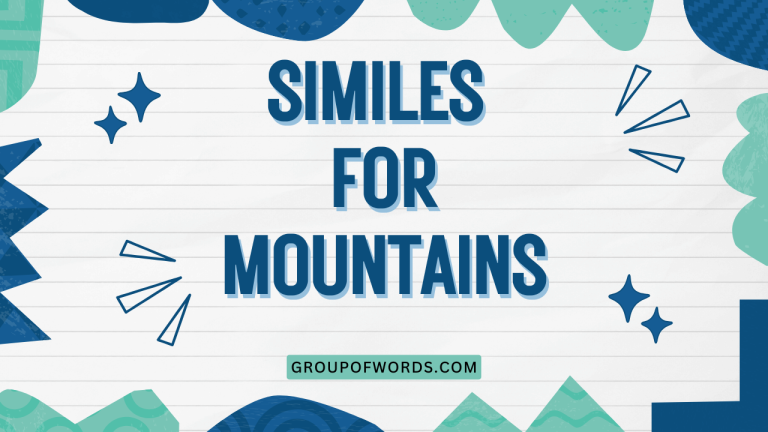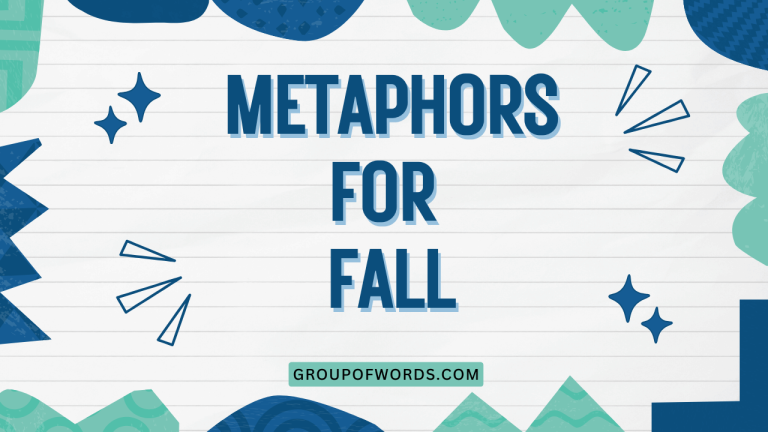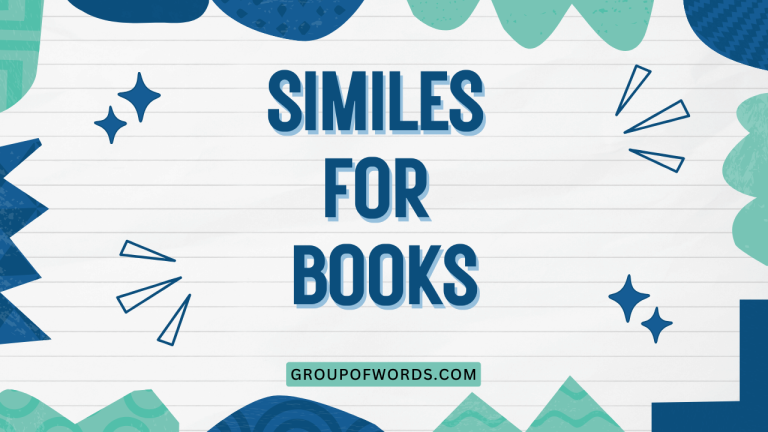Similes for Yourself: Mastering Self-Comparison
Understanding similes is crucial for enriching your writing and enhancing your communication skills. Similes, a type of figurative language, allow you to draw vivid comparisons, making your descriptions more engaging and relatable.
This article provides a comprehensive guide to using similes effectively, focusing specifically on similes used to describe oneself. Whether you’re a student, writer, or simply looking to improve your language skills, this guide will provide clear explanations, numerous examples, and practical exercises to help you master the art of self-description using similes.
This detailed exploration will cover the definition of similes, their structure, different types, usage rules, common mistakes, and advanced applications. By the end of this article, you’ll be equipped with the knowledge and skills to craft compelling and expressive self-descriptions using similes.
This article is designed for English language learners of all levels, from beginners to advanced speakers, who wish to enhance their descriptive abilities and creative writing skills.
Table of Contents
- Definition of Similes
- Structural Breakdown of Similes
- Types of Similes
- Examples of Similes for Yourself
- Usage Rules for Similes
- Common Mistakes with Similes
- Practice Exercises
- Advanced Topics in Similes
- Frequently Asked Questions
- Conclusion
Definition of Similes
A simile is a figure of speech that directly compares two different things using the words “like” or “as.” The purpose of a simile is to create a more vivid and relatable image or understanding by highlighting the similarities between the two things being compared. Similes are a powerful tool in descriptive writing and everyday conversation because they allow you to express complex ideas or feelings in a simple and understandable way. Understanding similes is essential for improving both your comprehension and expression in the English language.
Similes are often used to add color and depth to writing, making it more engaging for the reader. They can be found in various forms of literature, including poetry, prose, and drama.
In everyday conversation, similes help to clarify meaning and make communication more effective. By drawing a comparison between something familiar and something less known, similes can create a bridge of understanding that enhances communication.
Structural Breakdown of Similes
The basic structure of a simile consists of three key components: the subject (the thing being described), the linking word (“like” or “as”), and the object of comparison (the thing to which the subject is being compared). Understanding this structure is essential for creating effective and clear similes. The subject and the object of comparison must be different, but they should share a common characteristic that justifies the comparison.
The linking word, either “like” or “as,” serves as the bridge connecting the subject and the object of comparison. This word indicates that a comparison is being made rather than a statement of equality.
The choice between “like” and “as” is often a matter of personal preference or stylistic choice, but both serve the same fundamental purpose. Here’s a detailed breakdown:
- Subject: The person or thing being described.
- Linking Word: “Like” or “as.”
- Object of Comparison: The person or thing to which the subject is being compared.
For example, in the simile “I am as brave as a lion,” “I” is the subject, “as” is the linking word, and “a lion” is the object of comparison. This structure allows you to convey the idea that you possess the characteristic of bravery, similar to that of a lion.
Recognizing and understanding this structure enables you to both interpret and create similes effectively.
Types of Similes
Similes can be categorized based on the type of comparison they make and the characteristics they emphasize. While the basic structure remains consistent, the specific function and impact of a simile can vary depending on the nature of the comparison.
Here are a few common types of similes:
Descriptive Similes
Descriptive similes focus on physical attributes or qualities. They paint a vivid picture by comparing the subject to something that shares similar characteristics.
For example, “My hair is like spun gold” uses a descriptive simile to compare the color and texture of hair to the appearance of gold.
Emotional Similes
Emotional similes convey feelings or states of mind. They help to express emotions more powerfully by comparing them to something that evokes a similar emotional response.
For example, “I feel as light as a feather” uses an emotional simile to describe a feeling of happiness or relief.
Behavioral Similes
Behavioral similes compare actions or behaviors to those of something else, often an animal or a well-known figure. These similes can illustrate habits, tendencies, or typical reactions.
For example, “I am as stubborn as a mule” uses a behavioral simile to describe a tendency to be unyielding or resistant.
Abstract Similes
Abstract similes compare intangible concepts or ideas. These can be more complex and require a deeper understanding of the things being compared.
For example, “My mind is like a tangled web” uses an abstract simile to describe a state of confusion or complexity.
Examples of Similes for Yourself
The following tables provide extensive examples of similes that can be used to describe oneself, categorized by different aspects of personality, appearance, and behavior. Each example is designed to illustrate how similes can be used to create a vivid and engaging self-portrait.
Similes Describing Personality
This table presents similes that focus on various personality traits, allowing you to describe your character in creative and relatable ways. Each simile offers a unique comparison that highlights different aspects of your personality.
| Simile | Explanation |
|---|---|
| I am as patient as a saint. | Describes a high level of patience and tolerance. |
| I am like a bubbling brook, always cheerful. | Indicates a consistently positive and joyful disposition. |
| I am as determined as a bulldog. | Illustrates a strong will and persistence in achieving goals. |
| I am like a gentle breeze, calm and soothing. | Describes a peaceful and comforting presence. |
| I am as resilient as a rubber band. | Highlights the ability to bounce back from setbacks. |
| I am like a curious cat, always exploring. | Indicates a desire to learn and discover new things. |
| I am as organized as a filing cabinet. | Describes a meticulous and structured approach to tasks. |
| I am like a roaring fire, passionate and intense. | Indicates a strong and fervent enthusiasm. |
| I am as adaptable as a chameleon. | Highlights the ability to adjust to different situations. |
| I am like a wise owl, thoughtful and observant. | Describes a tendency to be reflective and perceptive. |
| I am as loyal as a golden retriever. | Describes unwavering commitment and faithfulness. |
| I am like a ray of sunshine, bringing joy to others. | Indicates a positive and uplifting influence. |
| I am as brave as a lion. | Illustrates courage and fearlessness in the face of challenges. |
| I am like a deep ocean, full of mysteries. | Describes a complex and enigmatic personality. |
| I am as stubborn as a mule. | Highlights a tendency to be unyielding and resistant to change. |
| I am like a blooming flower, constantly growing. | Indicates a continuous process of self-improvement and development. |
| I am as grounded as an oak tree. | Describes stability and a strong sense of self. |
| I am like a shooting star, ambitious and driven. | Indicates a strong desire to achieve great things. |
| I am as gentle as a lamb. | Describes a kind and compassionate nature. |
| I am like a sturdy bridge, supportive and reliable. | Indicates a willingness to help and assist others. |
| I am as quick-witted as a fox. | Describes intelligence and cleverness. |
| I am like a busy bee, always productive. | Indicates diligence and constant activity. |
| I am as calm as a still lake. | Describes tranquility and composure. |
| I am like a shining star, always hopeful. | Indicates optimism and a positive outlook. |
| I am as steady as a rock. | Describes reliability and dependability. |
| I am like a winding river, full of surprises. | Indicates unpredictability and a varied nature. |
| I am as adaptable as water. | Highlights the ability to adjust to any situation. |
Similes Describing Appearance
This table provides similes that focus on physical characteristics, allowing you to describe your appearance in a more imaginative and engaging way. These comparisons help to create a vivid mental image for the reader.
| Simile | Explanation |
|---|---|
| My eyes are like deep pools. | Describes eyes that are captivating and mysterious. |
| My hair is as dark as night. | Indicates very dark hair color. |
| My skin is like porcelain. | Describes skin that is smooth and delicate. |
| My smile is as bright as the sun. | Highlights a warm and radiant smile. |
| My hands are like rough sandpaper. | Describes hands that are calloused or weathered. |
| My voice is like velvet. | Indicates a smooth and pleasant voice. |
| My stature is as imposing as a mountain. | Describes a tall and dominant presence. |
| My movements are like a graceful dancer. | Highlights fluid and elegant movements. |
| My laughter is as infectious as a giggle. | Describes laughter that is easily spread to others. |
| My gaze is like a hawk, sharp and focused. | Indicates a keen and observant look. |
| My hair is like spun gold. | Describes hair that is golden and lustrous. |
| My eyes are as blue as the ocean. | Indicates a deep blue eye color. |
| My complexion is like a summer peach. | Describes a warm and healthy skin tone. |
| My build is as sturdy as an oak. | Highlights a strong and robust physique. |
| My walk is like a cat, silent and stealthy. | Describes a quiet and careful manner of walking. |
| My features are as delicate as a flower. | Indicates refined and graceful facial features. |
| My presence is like a warm fire on a cold day. | Describes a comforting and welcoming demeanor. |
| My shadow is as long as a tree in the afternoon. | Highlights being tall and casting a large shadow. |
| My touch is as gentle as a feather. | Describes a soft and delicate touch. |
| My appearance is like a classic painting, timeless. | Indicates a beautiful and enduring aesthetic. |
| My eyes are as green as emeralds. | Describes eyes that are a vibrant green color. |
| My hair is like a tangled forest. | Indicates thick and unruly hair. |
| My skin is as smooth as silk. | Describes skin that is soft and luxurious. |
| My presence is like a breath of fresh air. | Describes a revitalizing and invigorating effect. |
| My voice is as clear as a bell. | Indicates a distinct and melodious voice. |
| My face is like an open book. | Describes a face that clearly expresses emotions. |
Similes Describing Behavior
This table presents similes that focus on actions and behaviors, allowing you to describe your habits and tendencies through vivid comparisons. These similes help to illustrate how you typically act or react in various situations.
| Simile | Explanation |
|---|---|
| I work like a dog. | Describes working very hard and tirelessly. |
| I eat like a bird. | Indicates eating very small portions. |
| I sleep like a log. | Describes sleeping soundly and deeply. |
| I run like the wind. | Highlights running very fast. |
| I sing like an angel. | Describes singing beautifully and harmoniously. |
| I dance like a free spirit. | Indicates dancing with joy and abandon. |
| I learn like a sponge. | Describes absorbing information quickly and easily. |
| I argue like a lawyer. | Highlights arguing persuasively and logically. |
| I listen like a therapist. | Describes listening attentively and empathetically. |
| I observe like a detective. | Indicates being observant and detail-oriented. |
| I plan like an architect. | Describes planning meticulously and strategically. |
| I remember like an elephant. | Highlights having a very good memory. |
| I forgive like a saint. | Describes being very forgiving and compassionate. |
| I lead like a general. | Indicates leading with authority and decisiveness. |
| I follow like a sheep. | Describes following others without question. |
| I adapt like water. | Highlights being adaptable to any situation. |
| I create like an artist. | Describes creating with imagination and skill. |
| I speak like a politician. | Indicates speaking persuasively and diplomatically. |
| I write like a poet. | Describes writing with elegance and creativity. |
| I dream like a visionary. | Highlights having ambitious and imaginative dreams. |
| I worry like a mother hen. | Describes being overly concerned and protective. |
| I laugh like a hyena. | Indicates laughing loudly and heartily. |
| I cry like a baby. | Describes crying easily and intensely. |
| I think like a philosopher. | Highlights thinking deeply and abstractly. |
| I teach like a mentor. | Describes teaching with guidance and support. |
| I learn like a child. | Indicates learning with curiosity and enthusiasm. |
Usage Rules for Similes
Using similes effectively involves adhering to certain rules to ensure clarity and impact. Here are some key guidelines to keep in mind when crafting similes:
- Ensure a Clear Comparison: The two things being compared should have a recognizable similarity. The comparison should be logical and understandable to the reader.
- Avoid Clichés: While some similes are well-known, try to avoid overused clichés that have lost their impact. Strive for originality in your comparisons.
- Use Appropriate Language: Choose language that is appropriate for your audience and the context of your writing. Avoid using overly complex or obscure references.
- Maintain Consistency: Ensure that the comparison is consistent throughout the simile. The characteristics being compared should align logically.
- Be Concise: Keep the simile as concise as possible while still conveying the intended meaning. Avoid unnecessary words or phrases.
Additionally, it’s important to consider the tone and style of your writing when using similes. Similes can add humor, seriousness, or a sense of wonder to your writing, so choose them carefully to match the overall tone of your piece.
Pay attention to the rhythm and flow of your sentences to ensure that the simile integrates smoothly into your writing.
Common Mistakes with Similes
Even experienced writers can sometimes make mistakes when using similes. Here are some common errors to watch out for:
- Using Incorrect Linking Words: Confusing “like” and “as” or using other words inappropriately.
- Creating Illogical Comparisons: Comparing things that have no clear similarity.
- Overusing Clichés: Relying too heavily on common, overused similes.
- Making Comparisons Too Complex: Using comparisons that are too difficult for the reader to understand.
- Being Redundant: Repeating the same idea in both the subject and the object of comparison.
Here are some examples of common mistakes and how to correct them:
| Incorrect | Correct | Explanation |
|---|---|---|
| I am like a person. | I am like a kind person. | The original comparison is redundant; it needs a specific quality. |
| I am as fast than a cheetah. | I am as fast as a cheetah. | Incorrect use of “than” instead of “as.” |
| I am like a rose, but also a flower. | I am like a rose, beautiful and delicate. | Unnecessary repetition; the comparison should add new information. |
Practice Exercises
Test your understanding of similes with these practice exercises. Each exercise includes a set of questions designed to reinforce your knowledge and skills in using similes effectively.
Answers are provided at the end of each exercise to help you assess your progress.
Exercise 1: Identifying Similes
Identify the similes in the following sentences:
| Question | Answer |
|---|---|
| 1. She is as graceful as a swan. | as graceful as a swan |
| 2. The house stood silent in the night. | No simile |
| 3. He runs like the wind. | like the wind |
| 4. The moon was bright. | No simile |
| 5. Her voice is like velvet. | like velvet |
| 6. The car is red. | No simile |
| 7. The snow fell softly. | No simile |
| 8. The child slept like a log. | like a log |
| 9. The sun shone brightly. | No simile |
| 10. My love is like a red, red rose. | like a red, red rose |
Exercise 2: Completing Similes
Complete the following similes with an appropriate comparison:
| Question | Answer |
|---|---|
| 1. I am as strong as ______. | an ox |
| 2. I am like ______, always cheerful. | a bubbling brook |
| 3. I am as determined as ______. | a bulldog |
| 4. I am like ______, calm and soothing. | a gentle breeze |
| 5. I am as resilient as ______. | a rubber band |
| 6. I am like ______, always exploring. | a curious cat |
| 7. I am as organized as ______. | a filing cabinet |
| 8. I am like ______, passionate and intense. | a roaring fire |
| 9. I am as adaptable as ______. | a chameleon |
| 10. I am like ______, thoughtful and observant. | a wise owl |
Exercise 3: Writing Your Own Similes
Write a simile to describe each of the following aspects of yourself:
| Aspect | Example Answer |
|---|---|
| 1. Your personality | I am like a sturdy bridge, supportive and reliable. |
| 2. Your appearance | My eyes are as blue as the ocean. |
| 3. Your behavior | I learn like a sponge. |
| 4. Your emotions | I feel as light as a feather when I am happy. |
| 5. Your intellect | My mind is like a tangled web when I am confused. |
| 6. Your determination | I am as determined as a bulldog when I set my mind to something. |
| 7. Your kindness | I am as gentle as a lamb with my friends. |
| 8. Your resilience | I am as resilient as a rubber band when facing challenges. |
| 9. Your curiosity | I am like a curious cat, always exploring new ideas. |
| 10. Your loyalty | I am as loyal as a golden retriever to my family. |
Advanced Topics in Similes
For advanced learners, exploring more complex aspects of similes can further enhance your understanding and usage. Consider these advanced topics:
- Extended Similes: Similes that are developed over several sentences or paragraphs, providing a more detailed comparison.
- Subverted Similes: Similes that intentionally break the rules or expectations, often for humorous or ironic effect.
- Similes in Different Genres: Analyzing how similes are used differently in poetry, prose, drama, and other forms of writing.
- Similes in Cross-Cultural Contexts: Understanding how cultural differences can affect the interpretation and effectiveness of similes.
By delving into these advanced topics, you can gain a deeper appreciation for the versatility and power of similes as a literary device. Experiment with these techniques in your own writing to create more nuanced and impactful comparisons.
Frequently Asked Questions
Here are some frequently asked questions about similes:
- What is the difference between a simile and a metaphor?
A simile directly compares two things using “like” or “as,” while a metaphor implies a comparison without using these words. For example, “He is like a lion” is a simile, while “He is a lion” is a metaphor. - Can a simile be a cliché?
Yes, if it is overused and lacks originality. Clichéd similes, such as “as busy as a bee,” have lost their impact due to overuse. - How can I make my similes more creative?
By avoiding clichés, using specific and vivid comparisons, and drawing connections between seemingly unrelated things. - Is it okay to use similes in formal writing?
Yes, but sparingly. Similes can add color and depth to formal writing, but they should be used judiciously and appropriately for the context. - What is the purpose of using similes?
To create a more vivid and relatable image or understanding by highlighting the similarities between two different things. - Are similes only used in writing?
No, similes are also used in everyday conversation to clarify meaning and make communication more effective. - How do I choose between “like” and “as” in a simile?
The choice is often a matter of personal preference or stylistic choice, as both serve the same fundamental purpose of indicating a comparison. However, “as” is often used when comparing an action, while “like” is used when comparing nouns or pronouns. - Can a simile compare more than two things?
While less common, similes can involve comparing a subject to multiple objects of comparison to create a more complex and nuanced image. However, it’s important to maintain clarity and avoid making the comparison too convoluted.
Conclusion
Mastering the use of similes is a valuable skill for anyone looking to enhance their writing and communication abilities. By understanding the definition, structure, types, and usage rules of similes, you can craft vivid and engaging descriptions that captivate your audience.
Remember to avoid clichés, ensure clear comparisons, and use appropriate language to create impactful similes.
Practice is key to mastering any skill, so continue to experiment with different types of similes and explore advanced topics to further refine your abilities. By incorporating similes into your writing and conversation, you can add depth, color, and creativity to your expression.
Keep exploring the nuances of language, and you’ll find that the ability to use similes effectively will greatly enhance your communication skills.
